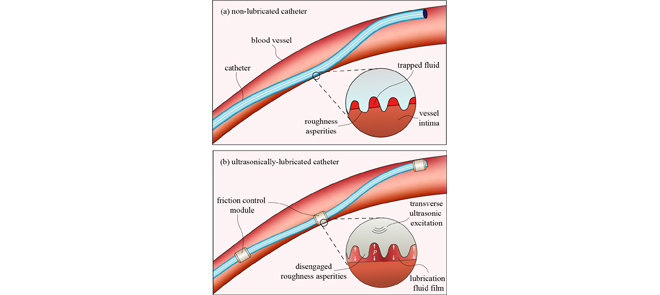2024-11-14 オランダ・デルフト工科大学(TUDelft)
<関連情報>
- https://www.tudelft.nl/en/2024/tu-delft/new-catheter-technology-promises-safer-and-more-efficient-treatment-of-blood-vessels
- https://ieeexplore.ieee.org/document/10684815
超音波潤滑を用いた可変摩擦カテーテルに向けて Toward Variable-Friction Catheters Using Ultrasonic Lubrication
Mostafa A. Atalla; Jeroen J. Tuijp; Michaël Wiertlewski; Aimée Sakes
IEEE Transactions on Medical Robotics and Bionics Published:20 September 2024
DOI:https://doi.org/10.1109/TMRB.2024.3464672

Abstract
Minimally invasive endovascular procedures use catheters that are guided through blood vessels to perform interventions, resulting in an inevitable frictional interaction between the catheter and the vessel walls. While this friction enhances stability during the intervention, it poses a risk of damaging the inner layer of the blood vessel wall during navigation, leading to post-operative complications including infectious diseases and thrombus formation. To mitigate the risk of adverse complications, we propose a new concept of a variable-friction catheter capable of transitioning from low friction during navigation to high friction for increased stability while performing the intervention. This variable-friction catheter leverages ultrasonic lubrication to actively control the frictional forces experienced by the catheter during the procedure. In this paper, we demonstrate a proof-of-concept for a friction control module, a pivotal component of the proposed catheter design. Our experiments demonstrate that the prototype effectively reduce friction by up to 11% and 60%, on average, on soft and rigid surfaces, representing its potential performance on healthy and calcified tissue, respectively. This result underscores the feasibility of the design and its potential to improve the safety and efficacy of minimally invasive endovascular procedures.


